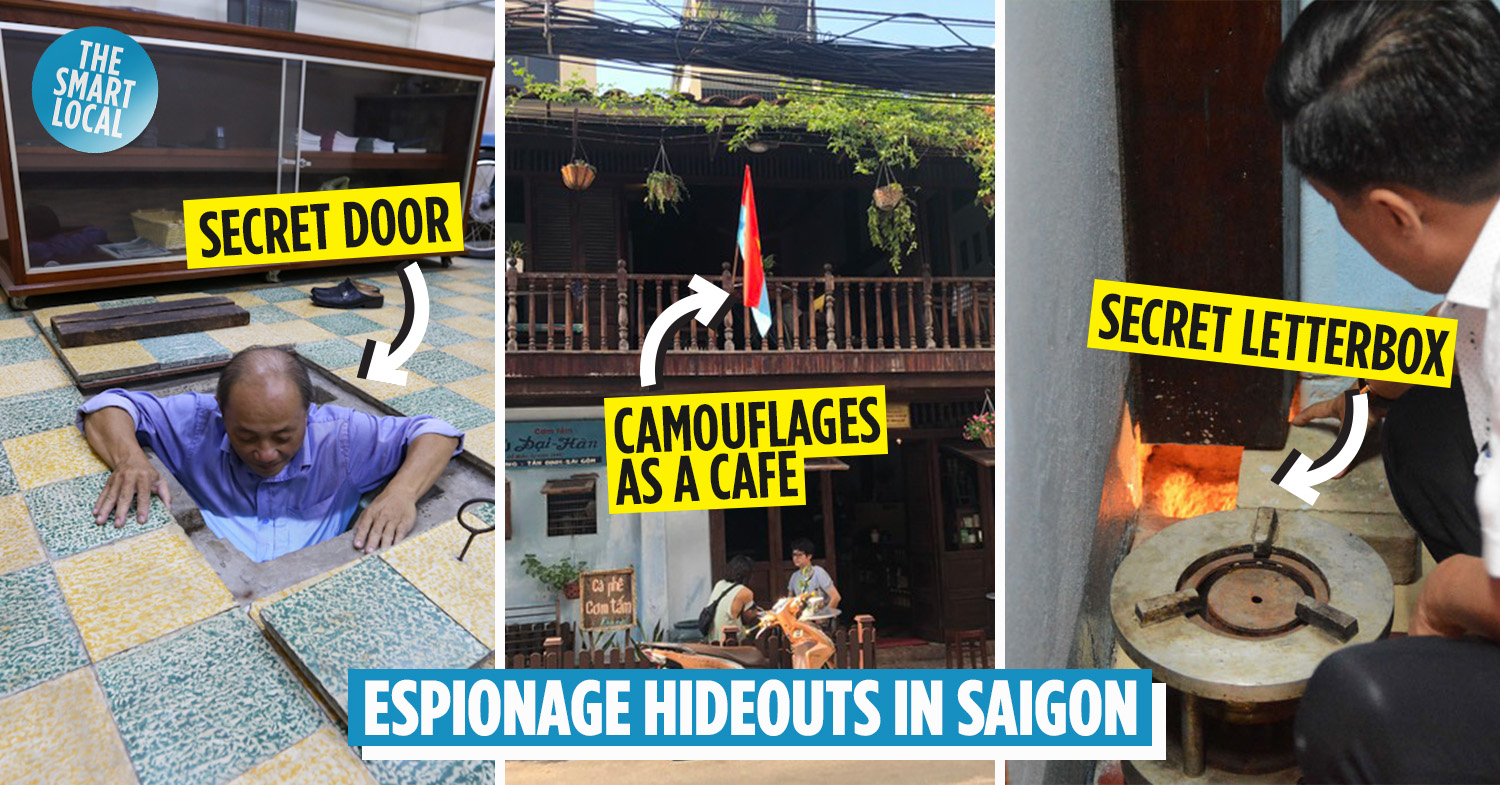Espionage hideouts in Saigon
The Vietnam War ended in 1975, putting an end to a 30-year complicated conflict. Since then, Saigon’s appearance has changed dramatically. However, there are still many historical places where you can come to explore the city’s past.
Among them, you can also visit some hideouts of the Biệt động Sài Gòn, or Special Task Force (STF), a special force of the National Liberation Front in southern Vietnam that hid in urban areas to plan and execute special missions or support massive attacks. In this article, we will list out 7 of these Vietnam War hideouts in Saigon that you can still explore today.
1. 122/8-10 Ngô Gia Tự Street – a printing house hidden under a cottage
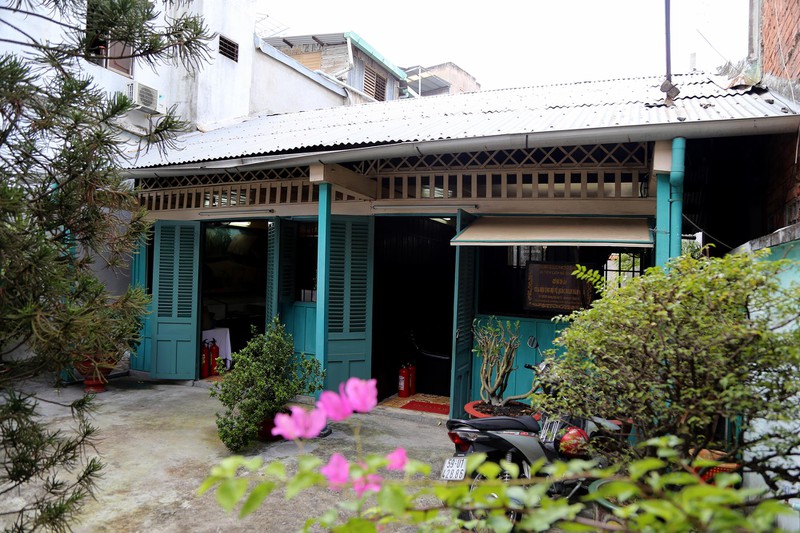
To hide the secret activities happening in the cellar underneath, the owner of this house turned it into a musical instrument workshop.
Image credit: Pháp Luật
If you don’t know much about the Vietnamese resistance against the French during the 1950s in Saigon, visit this printing house in District 10 to deepen your understanding of it. However, look carefully because on the surface, it just looks like any other country cottage in southern Vietnam.
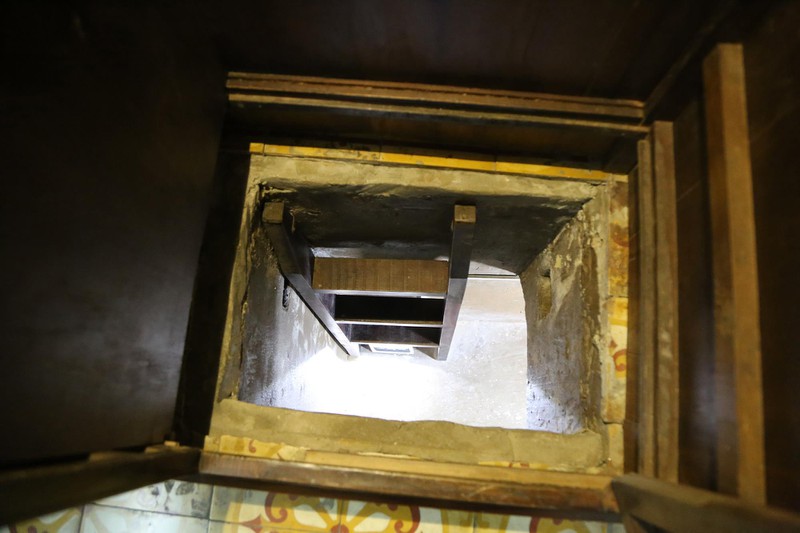
The door to the tunnel is inside a wardrobe.
Image credit: Pháp Luật
On 26th October 1947, the Hội ủng hộ Vệ quốc đoàn (National Guard Support Association) was established in Saigon to collect intel, raise funding, and cater to the national guards, the precursor force of the Vietnamese People’s Army. To create secret spaces for these activities, the association built two Vietnam War hideouts in Saigon – namely called Tunnel A and Tunnel B in English.
In 1951, the members of the association dug the first cellar at 23/122 Ngô Tùng Châu Street, renamed as Nơ Trang Long Street after 1975, located in Bình Thạnh District. They called this secret place Tunnel A.
However, as the position of Tunnel A was on the outskirts of Saigon, the members faced difficulties transporting food, medicine, and even ammunition from neighbouring provinces to the city center. Hence, in 1952, the construction of a new cellar, Tunnel B, began at 122/8-10 Ngô Gia Tự Street (formerly 122/351 Minh Mạng Street).
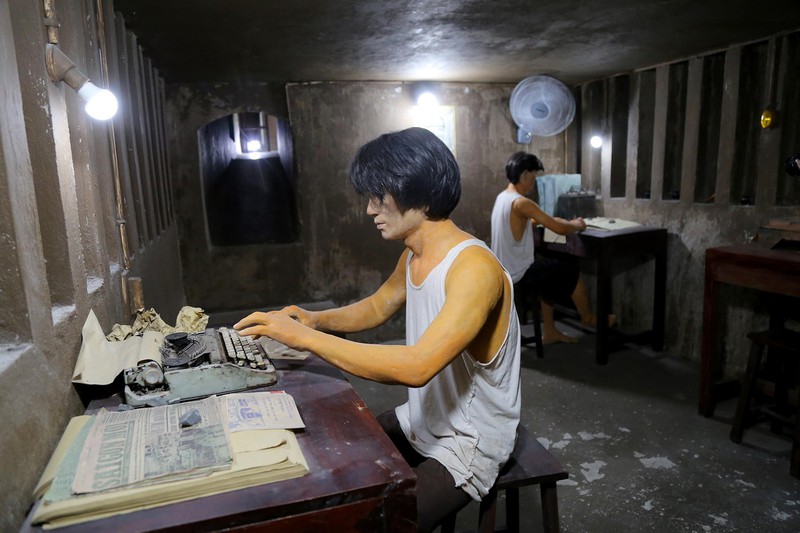
Many important documents were composed and printed under this house before being spread across Saigon.
Image credit: Pháp Luật
The cellar was under a cottage that was divided into two parts. The inner part was for living and cellar construction while the outer part was camouflaged as a musical instrument workshop.
The house and the cellar are connected by a ladder hidden inside a wardrobe. The main cellar is 3.5 metres long, 3.2 metres wide, and 1.7 metres tall, while the cellar’s ceiling was 1.8 metres thick. The whole underground system can contain up to 20 people and is ventilated by a tunnel connected to a well in the house’s front yard.
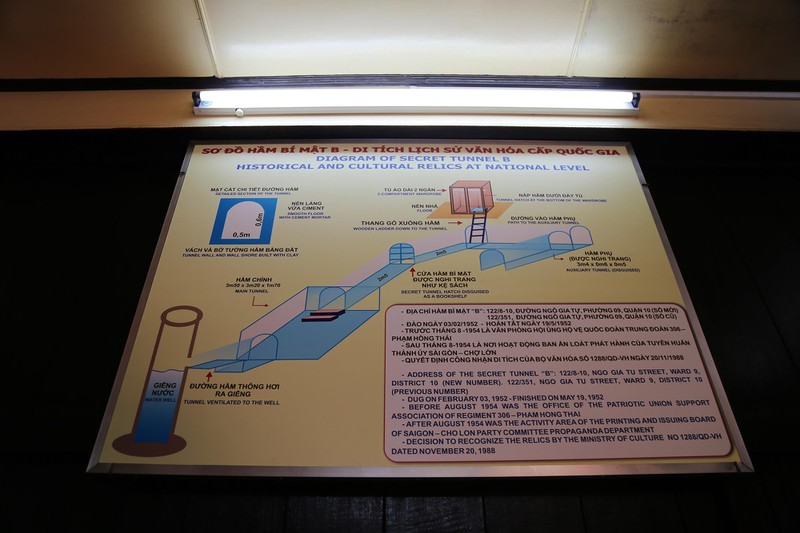
The diagram of Tunnel B
Image credit: Pháp Luật
In this cellar, association members composed, copied, and printed numerous important documents and leaflets supporting the resistance to both the fighters and the public until the French were defeated in 1954. In 1957, it was filled with soil until restoration after 1975.
Secret Tunnel B
Address: 122/8-10 Ngô Gia Tự Street, Ward 8, District 10, Hồ Chí Minh City
2. 287 Nguyễn Đình Chiểu Street – an alley house with tons of ammunition beneath
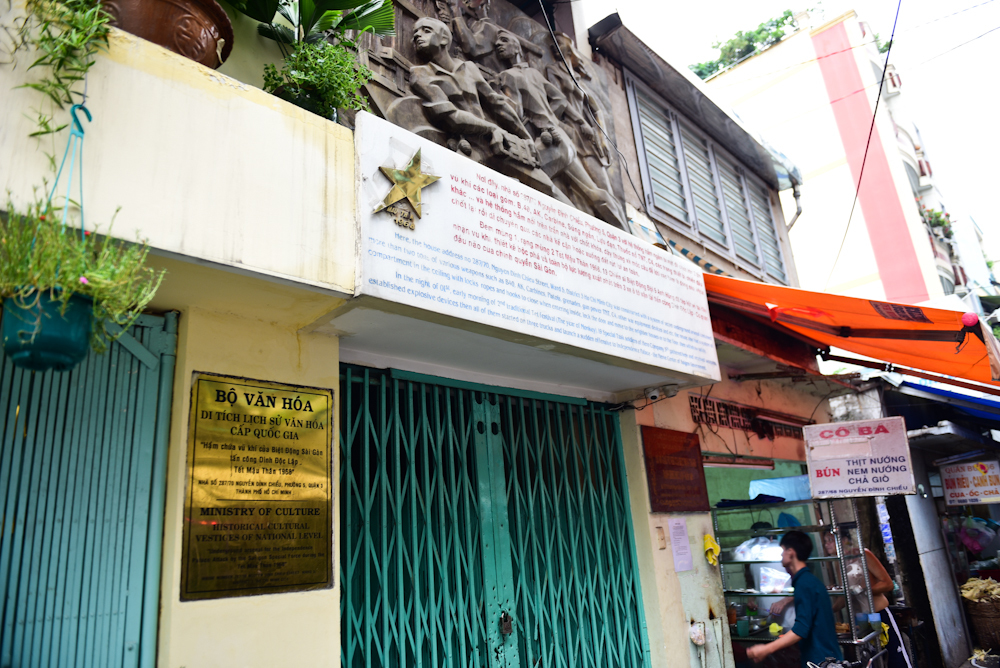
The arsenal was hidden under an ordinary alley house in downtown Saigon
Image credit: Vietnamnet
The Tết Offensive in 1968, one of the most important battles in the Vietnam War, could not have happened had it not been for secret arsenals in Vietnam War hideouts in Saigon, scattered across the city. The biggest of all was a secret tunnel under a small house in alley 287, Nguyễn Đình Chiểu Street (formerly Phan Đình Phùng Street), Ward 10, District 3.
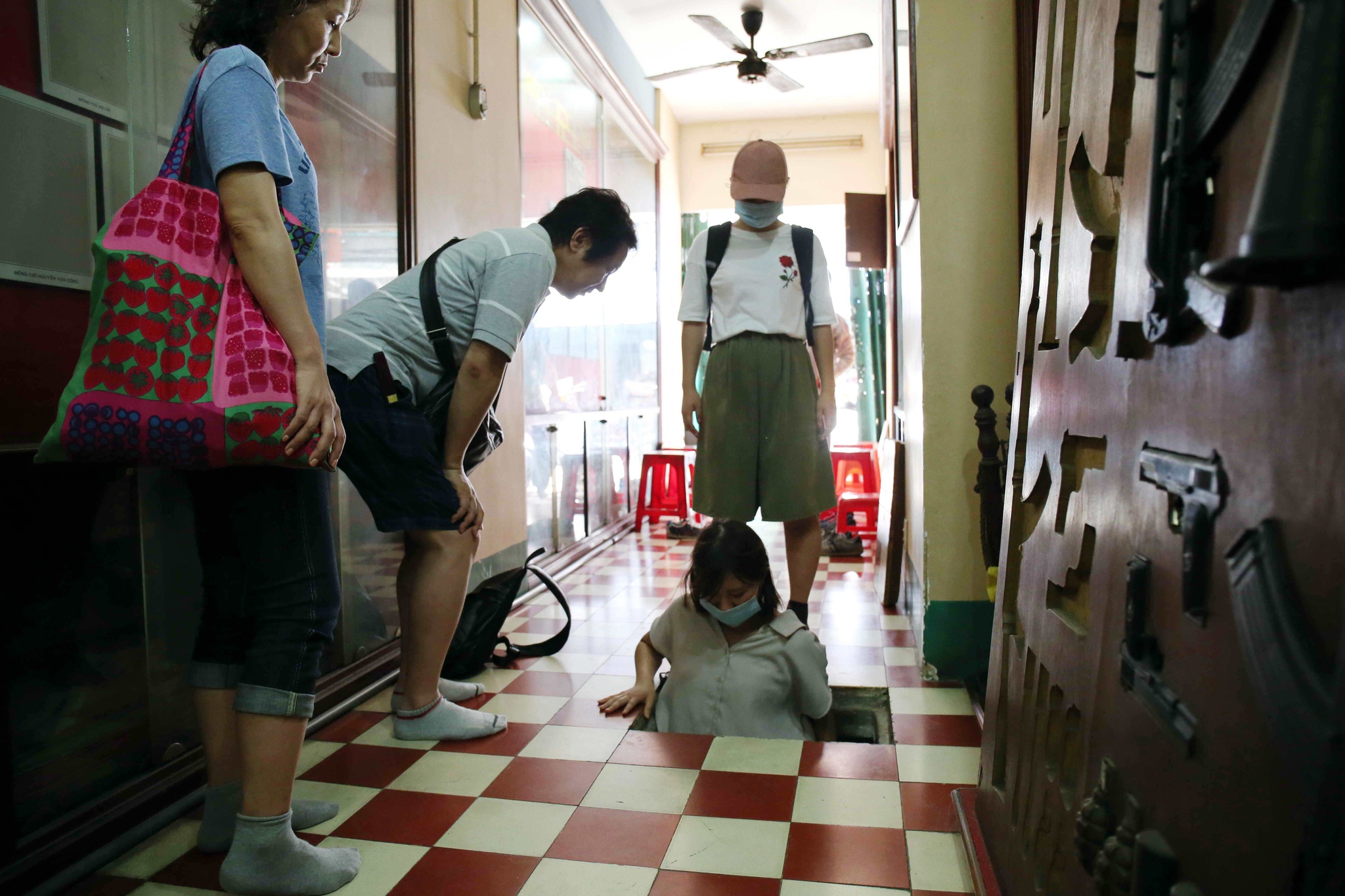
You can enter the tunnel by pulling up specific tiles on the floor.
Image credit: Thanh Niên
The owner of this house was Trần Văn Lai, who was publicly known at that time as Mai Hồng Quế – a wealthy contractor who was responsible for the furniture in the Independence Palace.
In early 1966, he bought three houses in a row along the alley as they were adjacent to the two main roads of the city, and started to build a secret cellar under them. Because the construction had to be secretive, the excavation was conducted at night and all the dug-out soil was transported by cars to the suburbs.
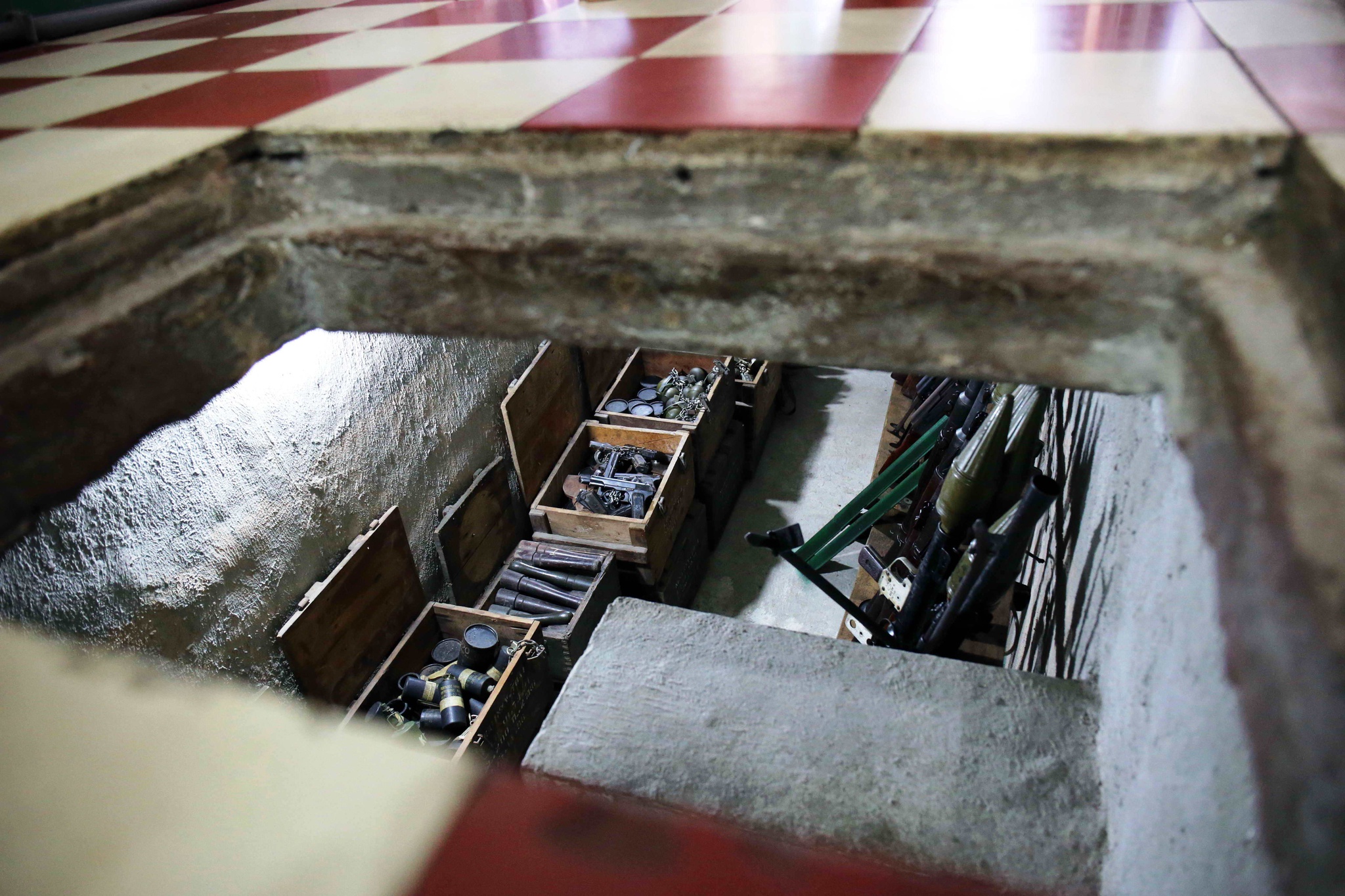
This was one of the largest arsenals of the special task force in Saigon. At its peak, it contained about 2 tonnes of weapons.
Image credit: Thanh Niên
Today, one of the three houses has been converted into a historical site. The house is quite small, only 14.9 metres long and 2.5 metres wide. The cellar beneath it is 8 metres long, 2 metres wide, and 2.5 metres high.
From 1966 to 1968, the special task force used this cellar as an arsenal, keeping more than 2 tonnes of ammunition in preparation for the Independence Palace attack during the Tết Offensive. TNT and C4 explosives, AK rifles and carbines, as well as grenades were once stored here.
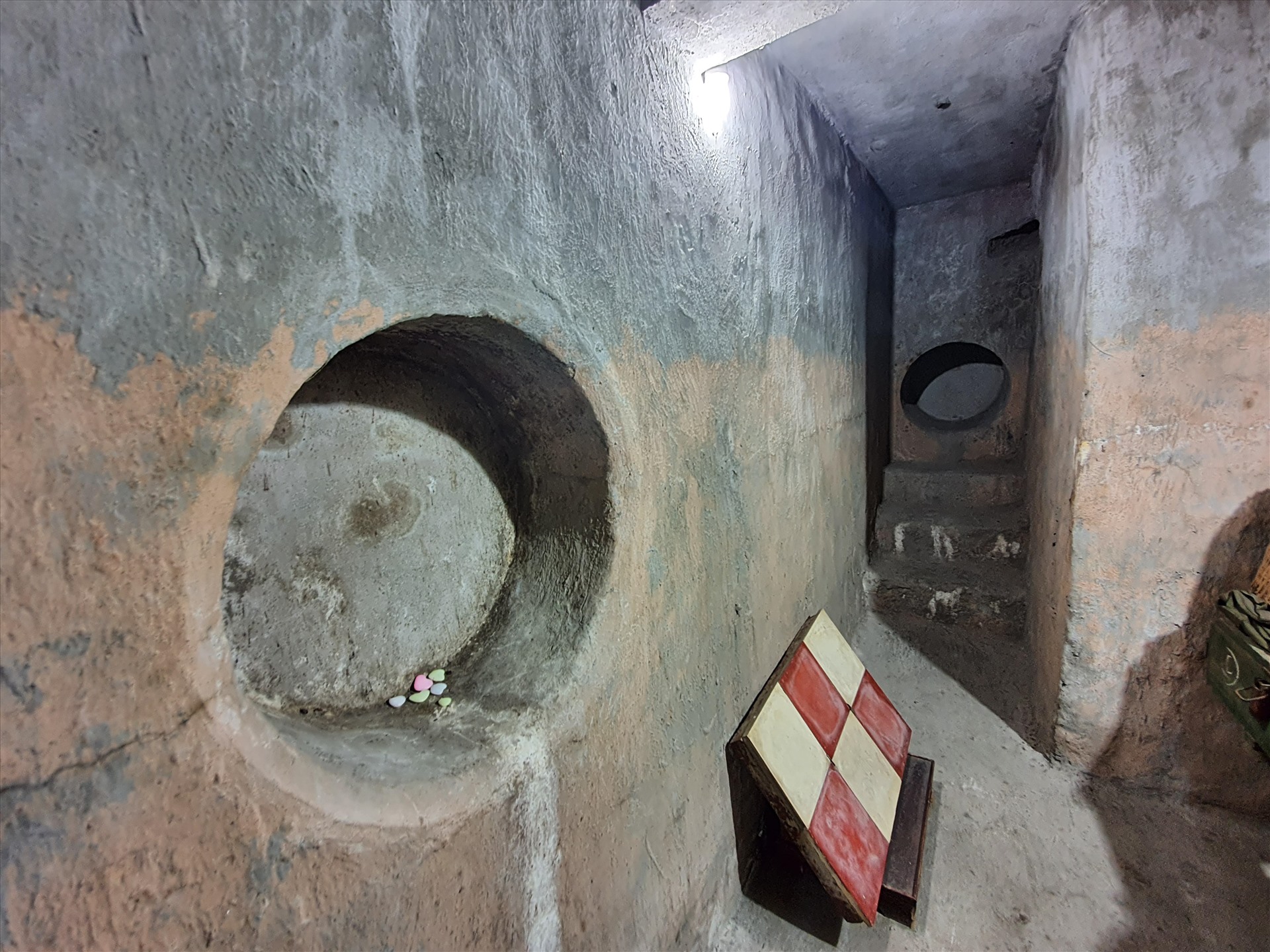
In case of emergency, STF members could escape through the drainage pipes connected to these round exits (now filled with concrete)
Image credit: Lao Động
After the offensive, Trần Văn Lai’s double identity got exposed. The house was confiscated but neither the then-South Vietnamese government nor new owners were aware of the cellar. After 1975, the house was returned to Nguyễn Văn Lai’s family.
Tết Offensive Secret Arsenal (District 3)
Address: 287/70 Nguyễn Đình Chiểu Street, Ward 5, District 3, Hồ Chí Minh City
3. 183/4, 3 tháng 2 Street, Ward 11, District 10 – a cellar in the miltary quarter of Saigon
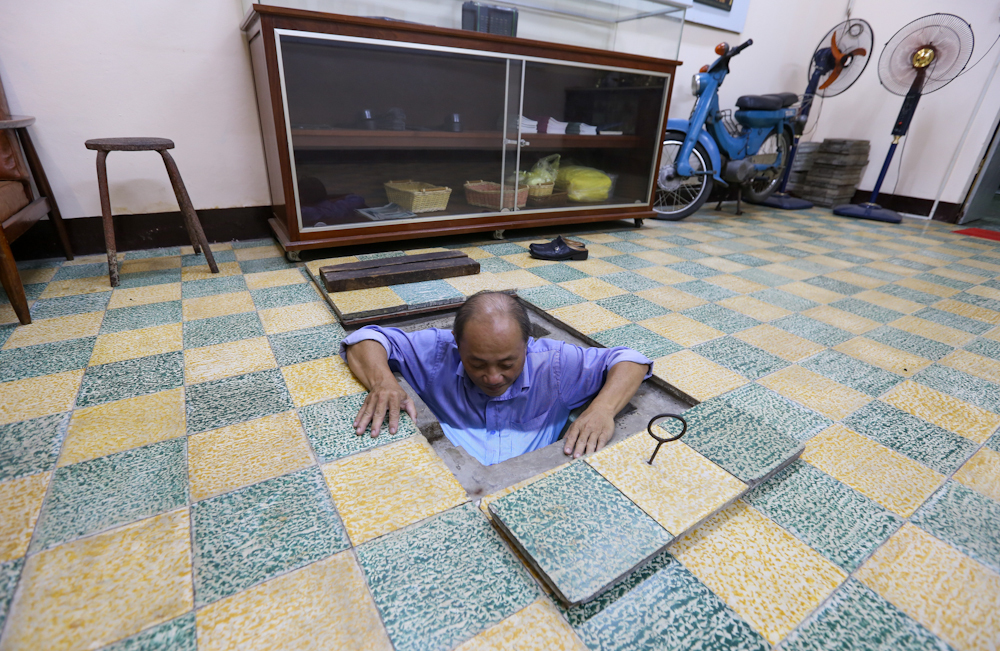
The cellar was built right under the living room.
Image credit: VnExpress
Apart from the cellar on Nguyễn Đình Chiểu Street, there was another one built right among the most important military buildings of the Saigon government to prepare for the Tết Offensive.
The house owner was Đỗ Văn Căn, also known as Hoàng Mạnh Lạc, or Ba Mủ, a special task force member doubling as a cobbler. The house is 12 metres long and 5 metres wide, and located at 3 tháng 2 Street, District 10 today.
Before 1975, its location was called 183/4 Trần Quốc Toản Street, District 3, and was near major then-South Vietnamese military organisations such as Capital Military District, and the Vietnamese Rangers Corp Headquarters. Plus, the National Administrative Academy and a Korean soldier’s residence were adjacent to the house.
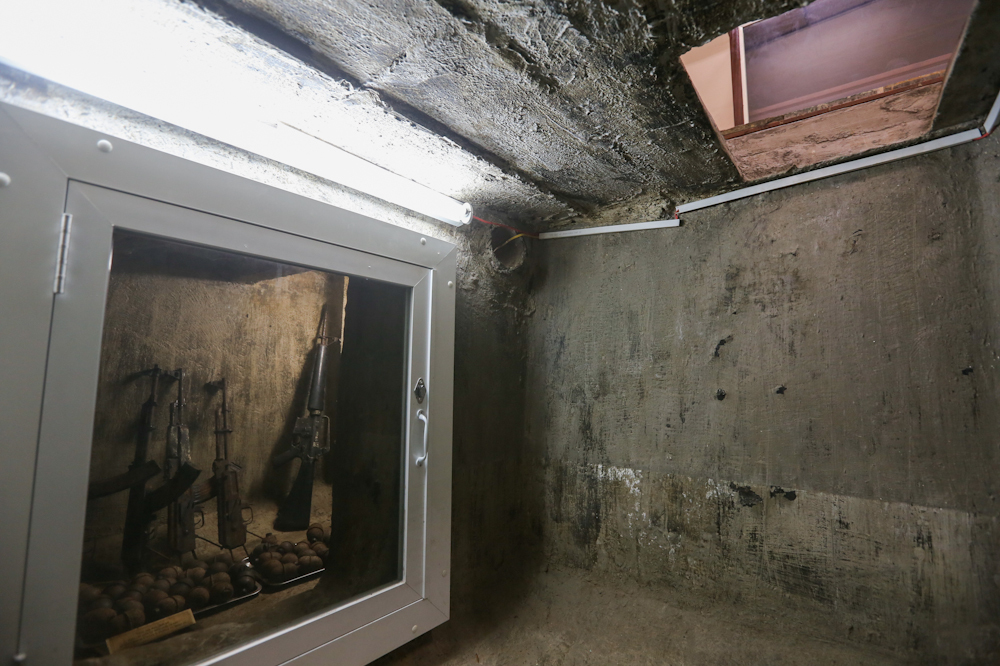
Compared to the tunnel on Nguyễn Đình Chiểu Street, this one is smaller.
Image credit: VnExpress
In 1965, to prepare for the offensive, he first took his family back to their hometown for safety reasons. Upon returning to Saigon himself, he started to excavate a cellar to store medicine and weapons. The tunnel is right under the house’s living room. It is 2.2 metres long, 1.8 metres wide, and 1.7 metres tall.
After the Tết Offensive, the house was checked multiple times by the then-South Vietnamese police but they could not find the cellar. In April 1975, the cellar was planned to be used as an arsenal in another attack but it became unnecessary after the Fall of Saigon.
Tết Offensive Secret Arsenal (District 10)
Address: 183/4, 3 tháng 2 Street, Ward 11, District 10, Hồ Chí Minh City
4. The Special Task Force Museum – learn about these fighters through virtual reality
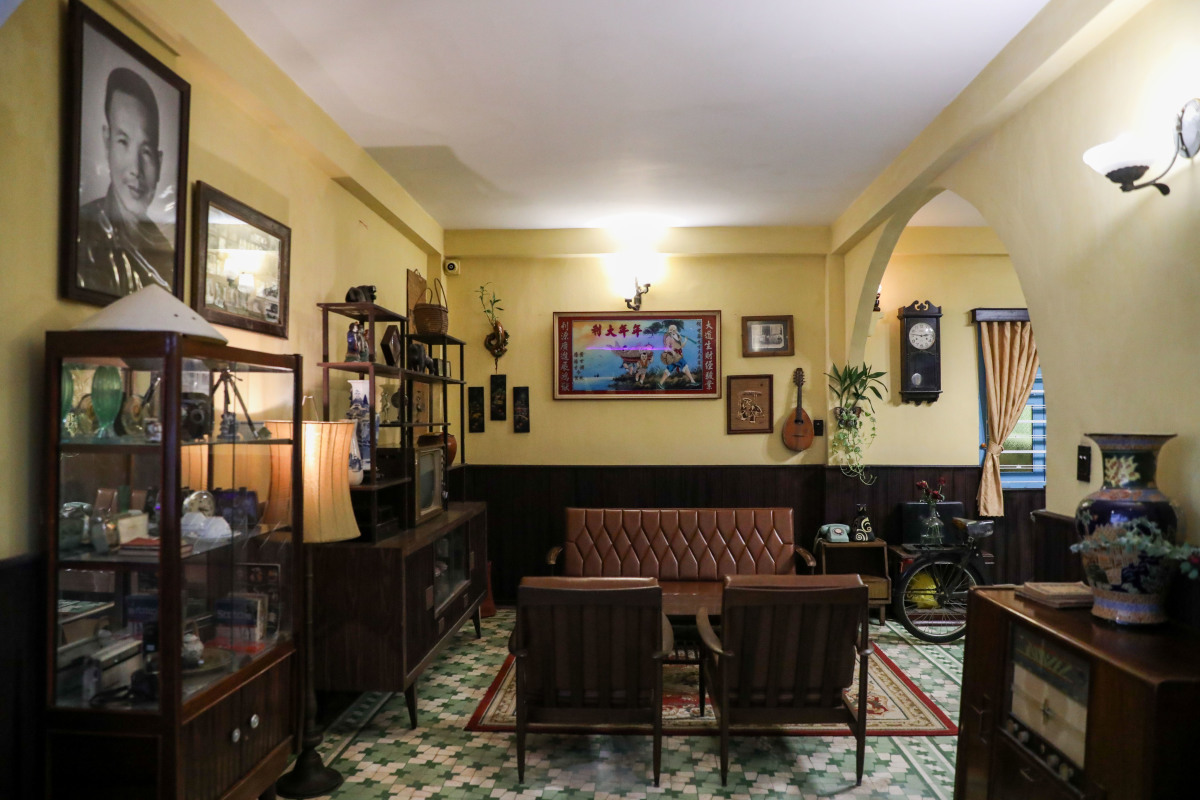
The interior is restored as they were during wartime.
Image credit: VnExpress
If you want to see as many artefacts of the STF as possible, the Special Task Force Museum is the place. Unlike other Vietnam War hideouts in Saigon, this is a private apartment without any hidden underground chamber.
Built in 1963 on Trần Quang Khải Street in District 1, the house used to be a gathering place of the special task force. The owner of this place was no other than Trần Văn Lai, the person who built the abovementioned cellar on Nguyễn Đình Chiểu Street.
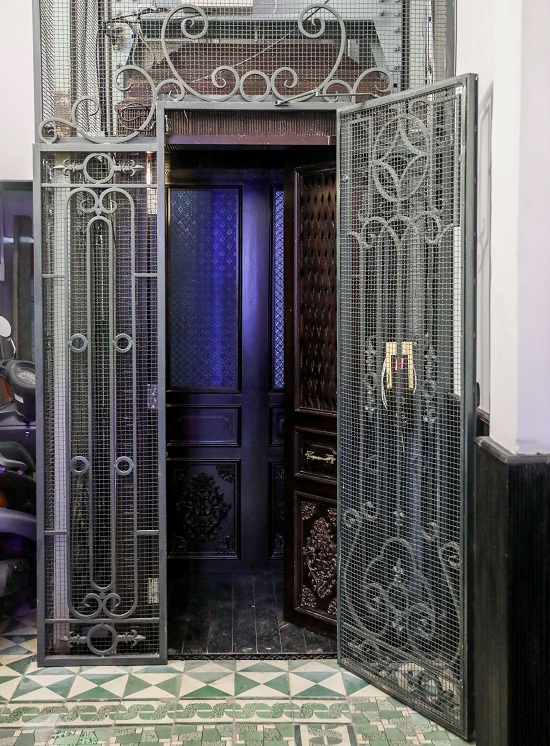
This old elevator will bring you to the museum on the second floor.
Image credit: VnExpress
Now, the apartment has been transformed into a museum solely attributed to the activities of the special task force. To this end, Trần Vũ Bình, Trần Văn Lai’s son, has collected artefacts from numerous sources.
Within the apartment of around 100 square meters, you can find many valuable images and objects from the Vietnam War: tables and chairs, a Solex moped, a Vespa, a typewriter, and so on. Interactive screens and VR glasses have also been set up to provide you with further information about the artefacts.
This is also the first private museum of this kind in Vietnam.
Special Task Force Smart Museum
Address: 2nd Floor, 145 Trần Quang Khải Street, Tân Định Ward, District 1, Hồ Chí Minh City
5. Nhan Hương Cafeteria – inside the Saigon Zoo
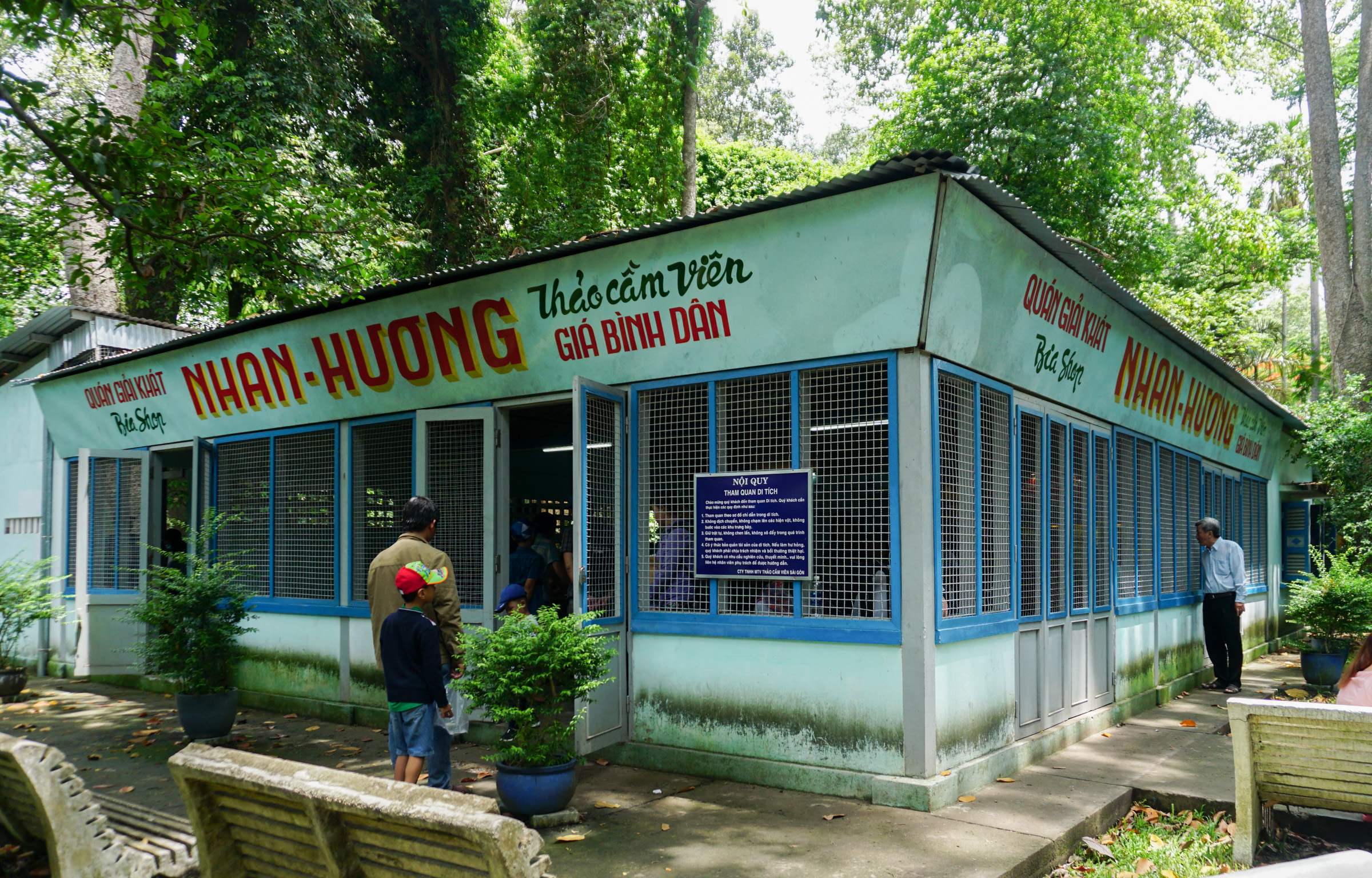
Nhan Hương Cafeteria with an old-style signboard
Image credit: VnExpress
You may be surprised that artifacts of the STF may even appear at famous attractions in the city such as the Saigon Zoo and Botanical Gardens.
In 1967, Nguyễn Văn Tửng used his own money to open Nhan Hương, a cafeteria named after his late wife, on an area of Saigon Zoo as the headquarters of the special task force in Saigon.
Indeed, this was such a daring move because the zoo not only was a popular place but also situated facing the Independence Palace. Despite this, the true purpose of this cafeteria was perfectly hidden till the end of the Vietnam War.
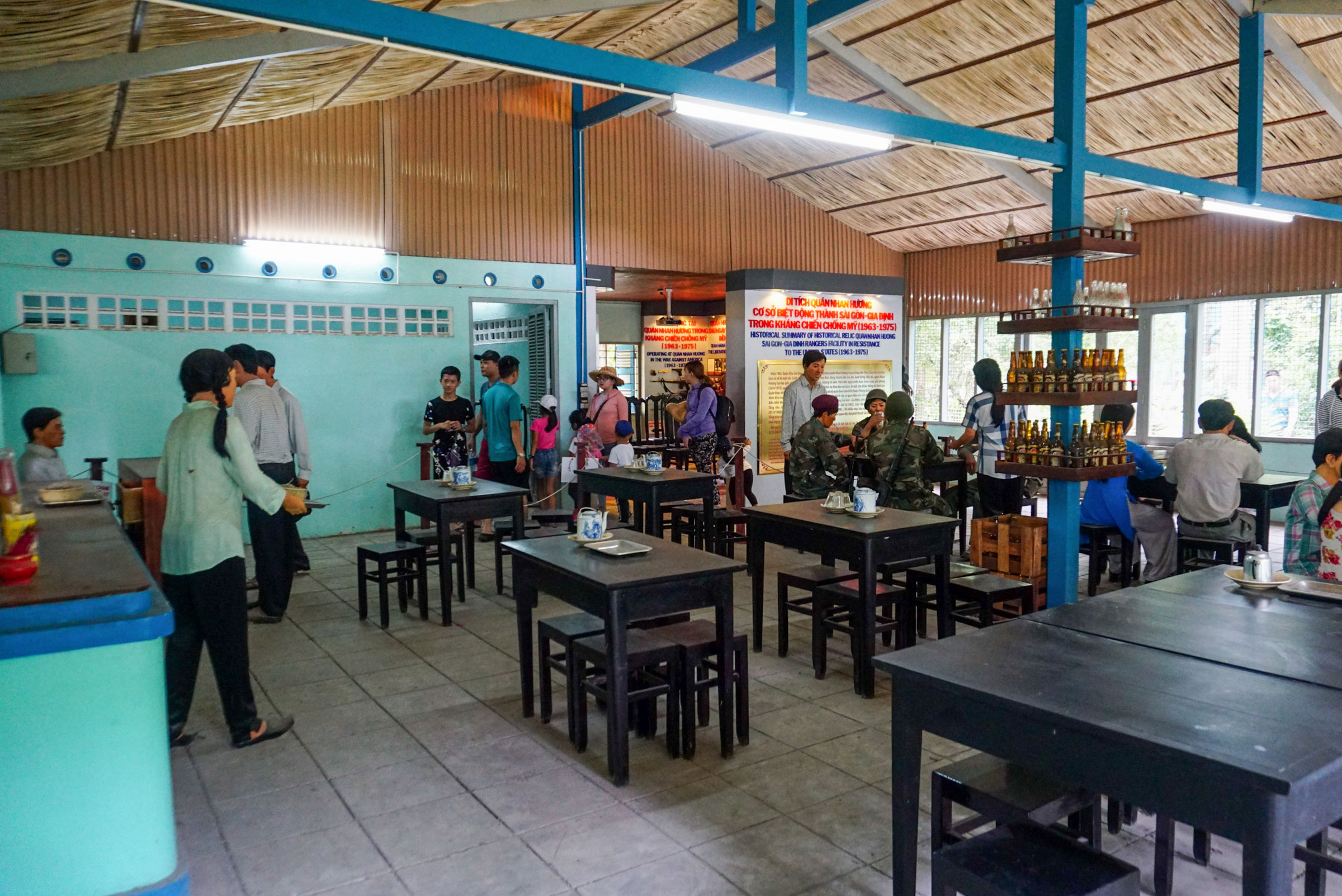
The re-enactment of the Nhan Hương Cafeteria before 1975 with statues
Image credit: VnExpress
Additionally, in an area of about 100 square metres, many secret spaces were used to store weapons, medicines, and important documents. For example, there were also small cellars underneath the cashier’s counter and behind the cafeteria to store weapons.
Nguyễn Văn Tửng also employed his own family members to work at this cafeteria to avoid being suspected of espionage activities.
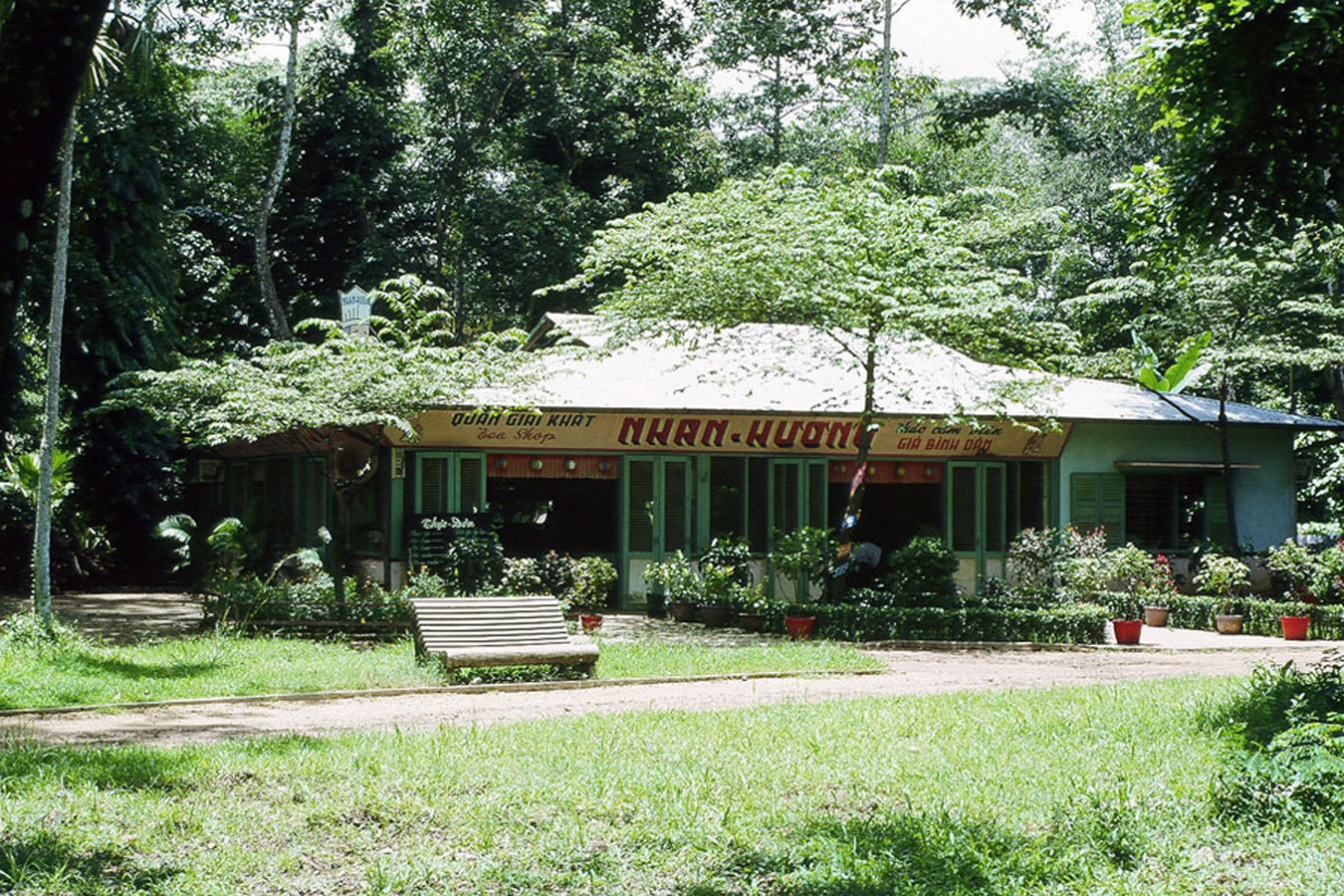
Nhan Hương Cafeteria before 1975
Image credit: manhhai
Today, in Saigon Zoo, you can still find the Nhan Hương cafeteria with its original settings with tables, chairs, tableware, and so on. Apart from that, you can also see many artefacts used by the special force when doing their missions.
Nhan Hương Cafeteria in Saigon Zoo
Address: 2 Nguyễn Bỉnh Khiêm Street, Bến Nghé Ward, District 1, Hồ Chí Minh City
6. Phở Bình – Tết Offensive Headquarter in an ordinary phở restaurant
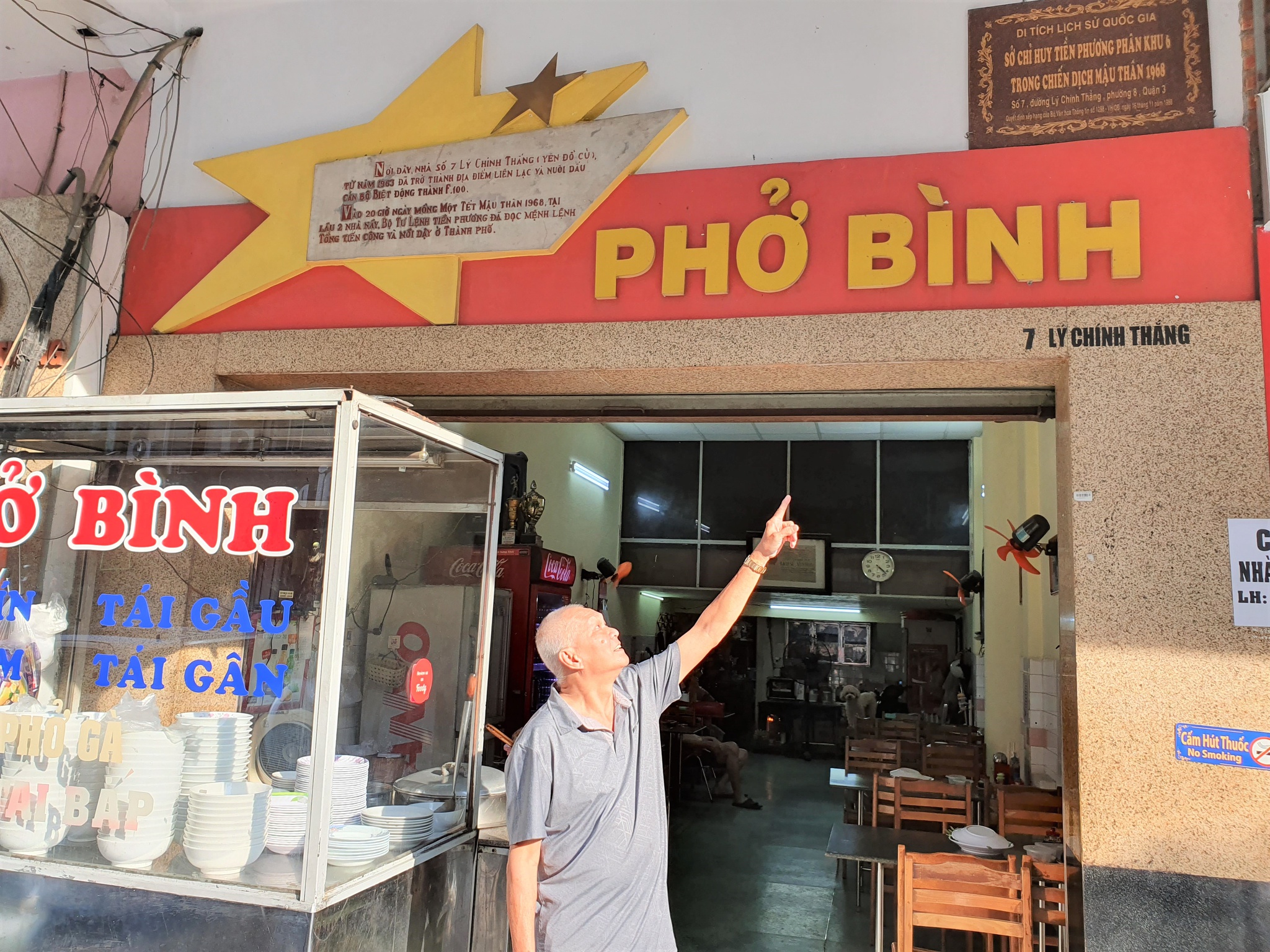
Phở Bình restaurant today
Image credit: Thanh Niên
The Tết Offensive was a game-changing event, but not all people know where it started was actually an ordinary phở stall that is still open today. That place is Phở Bình, a phở restaurant located on Lý Chính Thắng Street (formerly known as Yên Đỗ Street), District 3, Hồ Chí Minh City.
The first owner of this phở restaurant is Ngô Duy Ái, also known as Ngô Toại. In 1946, he moved from Nam Định, a province in northern Vietnam, to Saigon and opened this restaurant with his speciality phở recipe. After twenty years, his phở restaurant had become a favourite eating spot among locals, especially US experts working nearby.
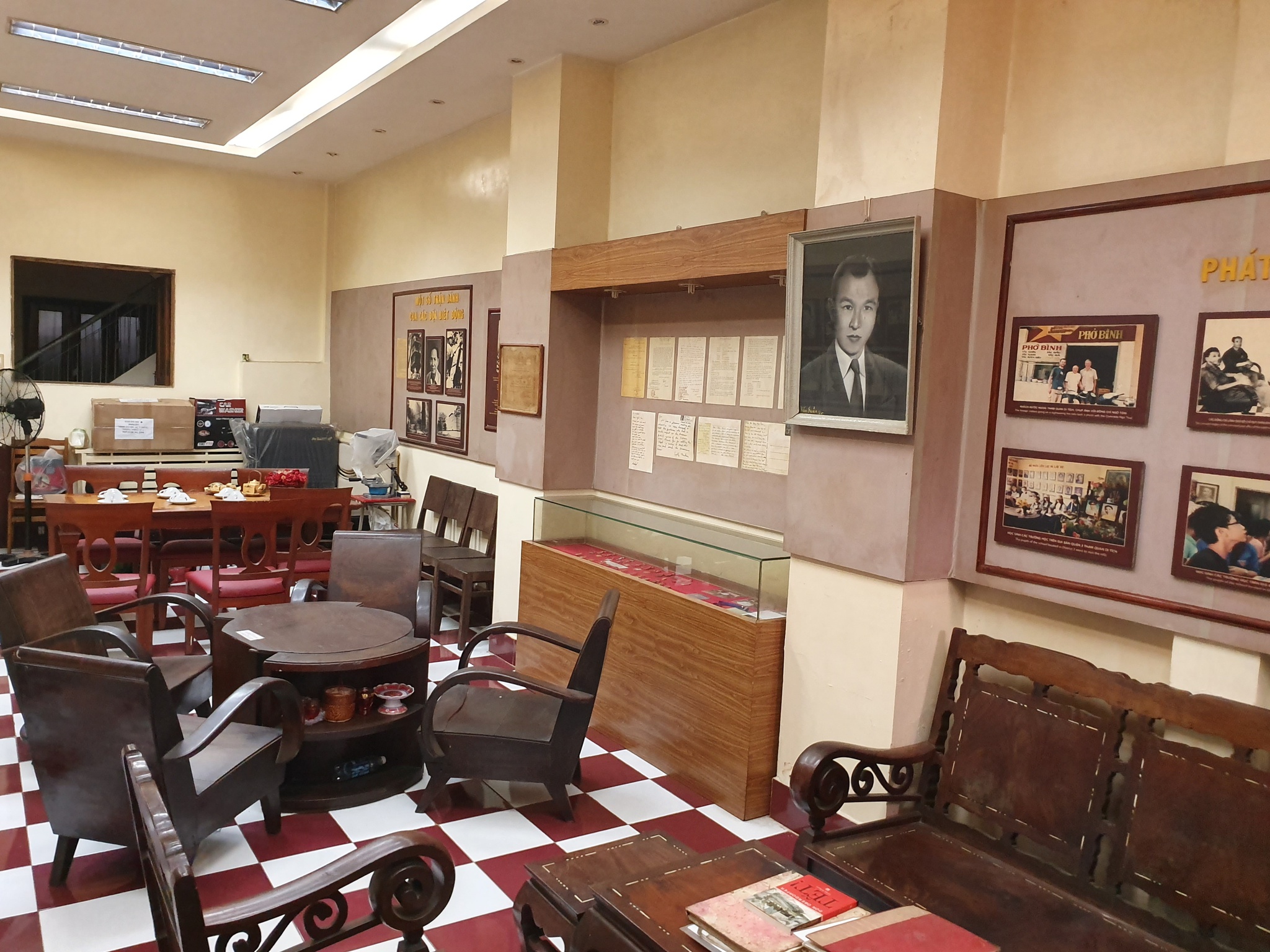
The second floor of Phở Bình is for exhibiting pictures and artefacts of the special task force.
Image credit: Thanh Niên
In 1963, Phở Bình was selected as a communications hub and a gathering place for the STF in Saigon. This was also the place where the offensive during the 1968 Tết Holidays was kickstarted.
Today, you can enjoy the flavour or northern-style phở at this restaurant. The price of each bowl varies from VND60,000 (~USD2.62) to VND75.000 (~USD3.28). The second floor is the exhibition space where you can find many pictures and artefacts related to the special task force, particularly their activities during the Tết Offensive.
Phở Bình
Address: 7 Lý Chính Thắng Street, Ward 8, District 3, Hồ Chí Minh City
7. Cà phê Đỗ Phủ – chill-out cafe next to a top general’s house
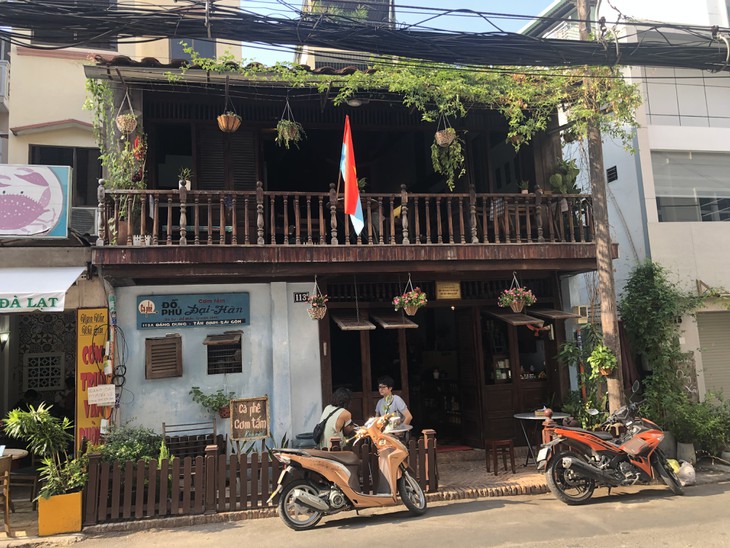
Cà phê Đỗ Phủ – cơm tấm Đại Hàn is noticeable with a National Liberation Front flag on the second floor’s balcony
Image credit: Voice of Vietnam
If you think establishing Vietnam War hideouts in Saigon’s crowded zoo or next to a military academy is already risky, building the tunnel next to a top South Vietnamese general is even more daring. This is the case for the Cà phê Đổ Phủ – Cơm tấm Đại Hàn, a cafe on Đặng Dung Street, District 3, Hồ Chí Minh City.
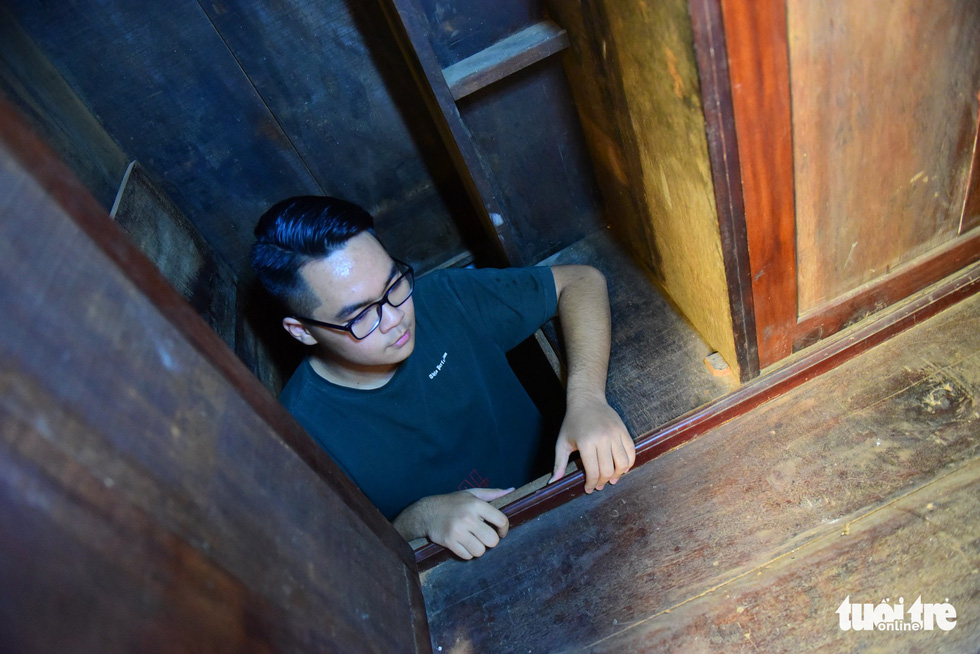
The door to the tunnel is hidden inside a wardrobe on the second floor
Image credit: Tuổi Trẻ
Just like the other Vietnam War hideouts in Saigon on Nguyễn Đình Chiểu and Trần Quang Khải Streets, this house belonged to Trần Văn Lai. To avoid suspicion, Trần Văn Lai asked his reliable partner, Đỗ Miễn, to take care of this estate.
So Đỗ Miễn and his family opened a cafe and cafeteria on the front-facing section of the house, while they turned the inside into a communications hub and a secret storehouse of the STF.
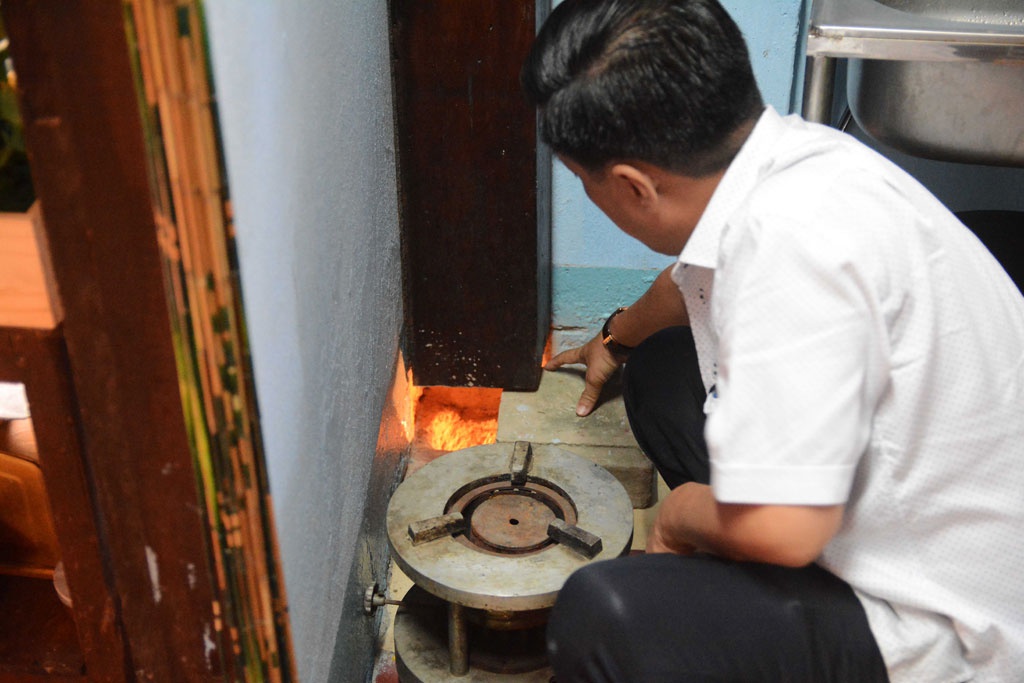
A secret mailbox hidden under a house pillar
Image credit: Thanh Niên
A cellar was built under the cafe to store medicines and weapons. You can access this cellar through a secret door inside the wardrobe on the second floor. In case any Special Task Force member got exposed, they could follow a tunnel to escape to Nguyễn Văn Nguyễn and Trần Quang Khải streets nearby.
Here, you can tour a secret attic, a mailbox hidden under a house pillar, and a storage space under a wooden plank on the floor. Although he lived next door, General Ngô Quang Trưởng, a top leader of the Army of the then-Republic of Vietnam, didn’t know anything about the cellar and tunnels.
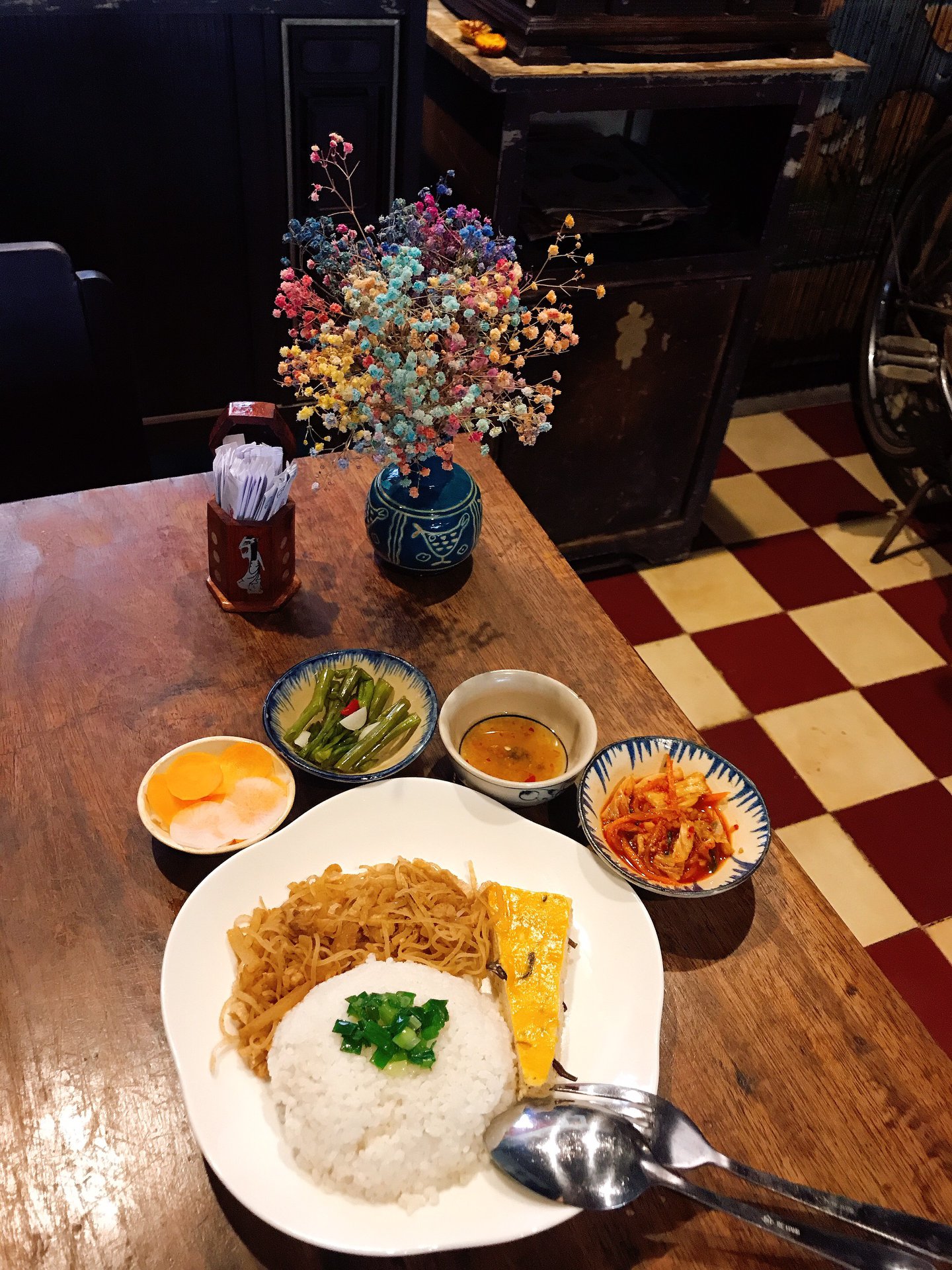
Cơm tấm Đại Hàn was a favourite of many South Korean soldiers in wartime.
Image credit: Cà phê Đổ Phủ – Cơm tấm Đại Hàn
Apart from the exhibits and cellars related to the STF, Cà phê Đỗ Phủ – Cơm tấm Đại Hàn also attracts many visitors thanks to its two specialities. The first is cà phê bơ Pháp, cleverly combining the strong bitter flavour of Vietnamese filtered coffee with the richness of French bretel butter.
The other is cơm tấm Đại Hàn, or a South Korean broken rice dish. It is a fusion of a Vietnamese broken rice dish cooked with an original recipe with kimchi. During the Vietnam War, South Korean soldiers usually came to this cafe and order cơm tấm Đại Hàn, hence the name. The prices of these dishes vary were around VND45.000 (~USD1.97).
Cà phê Đỗ Phủ – Cơm tấm Đại Hàn
Address: 113A Đặng Dung Street, Tân Định Ward, District 1, Hồ Chí Minh City
Vietnam War hideouts in Saigon
There are more Vietnam War hideouts in Saigon than what we’ve mentioned in this article. However, until those are fully renovated and open to the public, you can have a visit to the spots above.
Visiting these places will deepen your understanding of Saigon’s history before 1975 as well.
Also check out:
- Thích Quảng Đức: The monk who sparked a revolution
- Củ Chi Tunnels: The biggest war site in Vietnam
- Saigon landmarks then and now
Cover image adapted from VnExpress, Voice of Vietnam, and Thanh Niên
Enjoying The Smart Local Vietnam? Follow us on Facebook, Telegram, Instagram, and LinkedIn for more stories like this. If you have a story to share, email us at pressvn@thesmartlocal.com.
